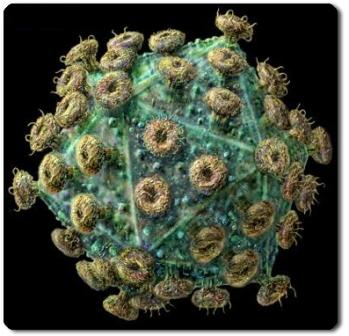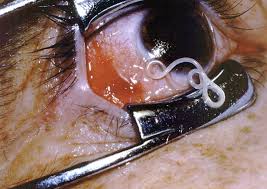Killing You Softly
Our guest expert today is Dr. Denene Lofland. Dr. Lofland received her PhD in pathology from the Medical College of Virginia, and she’s a trained clinical microbiologist. She has served as the Director of Clinical Laboratory Sciences at Wright State University, and has worked in biotech/drug research and development for many years.
Denene has worked on drug development programs for the U.S. government’s Defense Advanced Research Project Agency (DARPA). She contributed to the FDA approval of gemifloxacin (Factive), an antibiotic for the treatment of bacterial pneumonia, a drug that is now on the market and prescribed by physicians worldwide. She recently served as Manager of North Carolina Operations for a company that conducts high-level research and development in areas such as anti-bioterrorism.
She also supervised several projects, including government-sponsored research which required her to maintain a secret security clearance. Denene has published several articles in scientific journals and recently contributed to the thirteenth edition of Bailey and Scott’s Diagnostic Microbiology. She currently works as a professor at a medical school.
Microscopic Murder
What’s so interesting about microbiology?
Microorganisms were here before man walked the Earth, and they’ll be here after we’re gone. Actually, you would find it difficult to survive without them. Some bacteria, called commensals, live in and on our bodies to our benefit, protecting us from invading pathogens (disease causing germs), and they produce vitamins.
On the opposite end of the spectrum are the bad bugs. They’re responsible for more deaths than cancer, heart attacks, and war. They can disfigure, eat flesh, paralyze, or just make you feel so bad you’ll wish you were dead.
There are four major types of pathogenic microorganisms: bacteria, viruses, fungi, and parasites. They can cause damage directly, or they can release toxins that do the dirty work for them.
HIV virus
E.coli bacteria
Aspergillus (fungi)
Loa loa (parasite) in eye
So, how can your antagonists use microorganisms to kill? They’ll need a fundamental knowledge of microbiology, such as information that’s taught in a basic college course. Next, the bad guy will need a source of bacteria. Microbiology labs all over the world contain bugs of all types.
Biological safety hood for the safe handling of bacteria
Most of these laboratories are locked, so a little B & E would be in order. Or, maybe your antagonist has a connection with a person who has control of the bug of interest. If so, the evil-doer could make what’s known in the trade as a V.I.P. trip. He’d fly to the friend’s lab, place the bug in a plastic vial, hide the vial in his pocket (V.I.P.), and get back on the plane for the trip home.

Once the antagonist has the bug, he has to keep it alive and reproducing. Bacteria are grown on agar plates (food for bugs) in an incubator. In general, bacteria double in number every 20 minutes. So, if you start with just a few bugs, let’s say 10, and allow them to grow overnight…well, you do the math.
Once the killer has enough of the bug, then it’s time to deliver it to the intended victim.
Picking up bacteria from agar plate. The brownish-red material is the agar. The grayish coloring at the top of the agar is E.coli bacteria.
Now for a true story. It wasn’t murder, just an unfortunate accident that involved a woman, some green beans, and a home canning jar. Canning jars have lids designed to exhibit a slight indentation in their centers when food is fresh. If the indentation inverts (pops up), the vegetables may be contaminated, and should be discarded.
A woman was preparing dinner for her family and decided to serve some of her home-canned green beans that evening. She picked up a jar of beans, but thought the pop-up didn’t look quite right. So, to satisfy her curiosity, she opened the jar, touched her finger to the bean juice, and tasted it. It tasted fine to her, so she cooked the beans, and served the steaming hot dish to her family. The next day, the woman died, but her family survived. The beans contained botulism toxin, produced by the bacteria, Clostridium botulinum. C. botulinum lives naturally in the soil.
Botulism toxin is one of the most powerful neurotoxins known to man. About 10 ounces could kill everyone on Earth. It works by paralyzing its victim.
Oh, why didn’t the other members of the woman’s family die? The toxin is inactivated by heat.
* Per request, we’ve re-posted today’s article. I hope it helps with your research.









Great article. I love the photos. Sadly, I remember the story from a number of years ago where a woman served her guests home-canned corn and a number of them died from botulism.
Parasites in the eye, eewwwww !
That girl getting all the amputations sure is putting up a brave fight.
Plasmodium are parasites, Wally. They enter the body via an infected mosquito bite, travel to the liver, mature and multiply, and then invade red blood cells. The results – liver and spleen enlarge, patient becomes anemic, and a recurring fever. Interestingly, the fever occurs at specific time intervals specific to different species of Plasmodium.
Denene
So the the microscopic animals, like plasmodium falciprium, are not considered micro organisms? P Falciprium causes Tertiary Malignant Malaria. I forget what my Zoology professor called them. We were into fish anyway.
Great story on a fascinating subject. I used botulism as a cause of a murder in my book, SHE HAD TO KNOW. I really learned a lot while researching for it.
From our local news station, WTOC – …two years ago, a Bryan County firefighter died from the flesh-eating bacteria after scraping his arm while training. Neilsen, (the firefighter) scraped his arm during a training exercise, and quickly developed necrotizing facsitis. Almost three months later, he died from the infection.
“It moved so fast and so aggressively,” said Smith. “It’s almost like something out of a horror movie. He lost a large percentage of his skin in just 24 hours. I think in the end it was about 60 percent.”
What an eye opener. I used to do home canning when my kids were little. I always tried to be extremely careful. My kids told me I was posioning them because one year I made them eat store bought jam. lol
Sally, that happened here in Ga., unless the case you’ve mentioned is a different one. The woman here was enjoying a day at a local lake and decided to try using a zip-line. The cable (or rope) snapped and cut a gash in her calf, and that’s where the bacteria entered her body. Doctor’s amputated both hands, one leg, the foot from the other leg, and part of her abdomen. She’s off the ventilator now, breathing on her own…and talking. But she still has a long way to go. There’ve been two other recent cases of the same thing occurring.
Here’s the link to her (Aimee Copeland) FB page. Her family posts updates.
http://www.facebook.com/AimeeWePrayThatWeGetToSeeThatSmileAgain
I’m following a current story in the newspaper about a young woman who got a deep gash in her leg while hiking and some kind of flesh-eating bacteria entered the wound. Doctors will have to amputate both legs and hands for her to survive. She’s on a breathing tube and can’t talk as well. Scary stuff.
Yummy info!
Wow, fascinating stuff. My grandmother was a home-canner, and was always SO careful about her green beans. Not so much, the tomatoes. I know that the acid helps keep them safe, or supposedly does. I’m working on a short story with this concept in it, so am glad to see the facts. Thanks! bobbi c.
Definate keeper…excuse me my Muse is calling.
Good story. One of my great-grandfathers is reported to have eaten a can of tuna that no one else in the family would – because he didn’t want to waste it. It had gone bad, and he died as a result of his frugality.
Oh my!! That’s a keeper!!